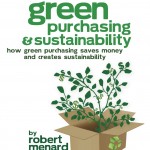How Green is Your Coffee?
 Editor’s note: Maureen Sullivan, President of NECI based in Victoria, BC, is a guest contributor to this blog. She may be reached at www.neci-legaledge.com . This blog post is used with permission and first appeared in The Legal Edge Issue 90, April – June 2010.
Editor’s note: Maureen Sullivan, President of NECI based in Victoria, BC, is a guest contributor to this blog. She may be reached at www.neci-legaledge.com . This blog post is used with permission and first appeared in The Legal Edge Issue 90, April – June 2010.
Posts with similar messages are found at
*******************************************************************************************************
Most of us understand the importance of incorporating sustainability and equity values into our procurement decisions and most organizations have implemented sustainability policies to guide their procurement staff. But what does that really look like for day-to-day procurement initiatives? Are you achieving your desired goals? How can you measure and demonstrate that?
Here is an example that illustrates how elusive achieving sustainability objectives can really be.
Best Intentions
A Victoria, B.C. organization that provides beverage service to its large customer base recently ran a Request for Proposals (RFP) competition to select a single coffee provider for all of its buildings for a period of five years. In keeping with its newly minted sustainability policy, the Planning Committee was very clear that it wanted to support organic fair trade coffee. It also knew that this would be demanded by its customers and expected by stakeholders. The committee structured the RFP accordingly, putting significant weight on the provision of “organic fair trade coffee” products.
The RFP for “organic fair trade coffee” drew significant attention from major players, in large part because of the predicted volume and the lengthy contract term. A multinational coffee company won the competition, based on a 1% price advantage over its competitors. The multinational committed to providing nothing but “organic fair trade coffee” to meet the buying organization’s requirements over the term of the contract. The pricing was certainly competitive, so the buying organization awarded the contract to the multinational, which was the lowest-cost compliant proponent.
A procurement success, right? But Not the Best Solution
As those in the coffee business know, but procurement folks may not, companies that provide coffee for end users are not designated “fair trade”; rather, it is the coffee itself that carries the designation (see sidebar). Some companies provide nothing but fair trade coffees; others carry a mixed inventory. Unfortunately, the RFP was not structured to take this into account.
About 90% of the coffee sold by the large multinational company is not fair trade coffee at all. This company does offer one coffee that is fairly traded, and that is the product promised to the buying organization for the next five years. The multinational will therefore be able to meet the technical requirements of the contract, at the lowest price. What is not factored in, however, is that on the way to delivering that fairly traded coffee, the multinational may stop at all of its other customers along the way delivering non-fairly traded coffee.
Best Practices
By contrast, one of the smaller companies that responded to the RFP carries nothing but fair trade coffee products. It works directly with coffee farmers to ensure that the farmers receive fair value for their beans and are treated equitably in all respects. This company spent a lot of time and resources trying to figure out what an RFP is and how to respond to it. The company is a leader in the fair trade coffee industry, and its ethical and environmental virtues are beyond dispute, but the idea of competing for contracts was fairly new for it.
Ultimately, the smaller company was unsuccessful in the RFP competition because of that 1% price advantage that the large multinational could offer – the multinational that deals mostly in non-fairly traded coffee. Deeply disappointed by the RFP process, this company is unlikely to respond to another one.
Best Lessons
Do your research! While the whole area of sustainable procurement is still emerging, what this particular example shows is that purchasing organizations need to thoroughly research their procurement requirements at the planning stage. Especially when moving in any new direction with procurement activities, or exploring new and different types of contracting arrangements. At the very least, some market sounding or other discussions with industry can uncover nuances of which even skilled procurement professionals might not be aware.
Why invest the time and resources? Two key reasons: first, without adequate research, the buying organization may not achieve its stated objectives, so would be unable to defend its decision, if challenged. Second, and perhaps more importantly, the most innovative suppliers may be shut out of major procurement activities and contract opportunities. The buying organization can’t benefit from what they offer, and the suppliers won’t have the business. Worse, they may not come back.
These days, research is ubiquitous, cheap (if not free), and accessible. There’s no reason to not do it early and often.
*******************************************************************************************************
Wake Up and Smell the Coffee Facts
- Twenty-five countries throughout Latin America, Asia and Africa produce Fair Trade Certified™ coffee.
- By linking directly with markets, farmers in Fair Trade co-operatives are able to earn three to five times more than they would receive by selling their coffee through conventional mechanisms.
- Licensed Fair Trade importers pay $1.26/lb ($1.41/lb if organic) to Fair Trade coffee co-operatives.
- Small farmers who work without the benefits of the Fair Trade label most often sell to middlemen, capturing a mere 2% to 4% of the retail price of coffee.
- At 2.3 billion pounds each year, Americans consume more coffee than any other nation.
- For every daily coffee drinker in the U.S., there is one worker elsewhere in the world who depends on coffee for his or her livelihood.
- Fair Trade Certified™ coffee is the fastest growing segment of the U.S. specialty coffee market: U.S. retail sales of Fair Trade Certified™ coffee grew from less than $50 million in 2000, to nearly $500 million by 2005.
- Approximately 85% of the Fair Trade Certified™ coffee sold in the U.S. is certified organic.
- Fair Trade certification ensures environmental stewardship and forbids the use of ISO-designated “dirty dozen” pesticides. Source: www.coffeeresearch.com
- More than 25 million people in the tropics depend on coffee, a crop that is the economic backbone of many countries and the worlds second-most traded commodity after oil.
- Organic coffee beans have been produced without the use of pesticides or herbicides. Non-organic coffee is typically higher yielding because it is not usually shade grown. The definition of certified organic coffee can be extended to include an emphasis on recycling, composting, soil health, and protection of the environment. These are important aspects to sustainability that are both cost effective and socially responsible. That is why organic fair trade coffee and organic shade-grown coffee often go hand in hand.
- Fair trade coffee, or equal-exchange coffee, is coffee that is traded by bypassing the coffee trader and therefore giving the producer (and buyer) higher profits. Source: www.rainforest-alliance.org
*******************************************************************************************************
